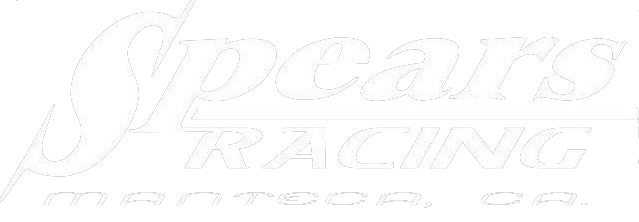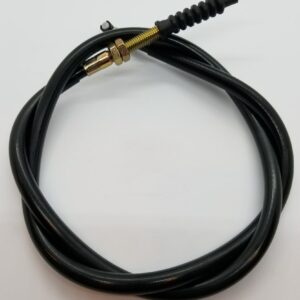Description
HM/Spears Racing Kawasaki Ninja 300 “WURX” Data Logger kit is the result in several hours of dedicated people/companies to bring the end user the best Data Acquisition data logger for the Kawasaki Ninja 300cc.This kit starts with the HM M3 Dash the Worlds most advanced, accurate and reliable PREDICTIVE GPS lap timer and does everything your standard dash does and more, a lot more. For example, on some model bikes the dash will tell you how many liters of fuel is in the tank, or what the oil level is. Graphical backlit LCD Multi-color LED’s for RPM / information and warnings Automatic display for stationary warm up / checking and then will switch once you start riding to track mode display.
The HM M3 Plugs into your stock dash connector. No wiring and no configuration needed – simply plug whatever sensors you want in. All of the available data from your ECU is logged (the M3 communicates with your ECU automatically).Mounting bracket is also included so that the Dash M3 simply bolts into the same place as the stock dash and sits in the same place.
The Ninja 300 does NOT have TPS (Reader on the Dash). So you will need to run a wire from the TPS sensor to ‘TPS’ on the back of the M3.(Supplied in Kit)
On the Ninja 300, there is a fairly simple OE dash connection. It has Temperature, RPM, Speed (RWS), Fault Codes, and a few others. NOTE: For Speed to be present, speed must be viewable on the stock dash. If the stock dash does not have speed (because the speed rings have been removed) then the M3 will not have speed.
http://www.hmquickshifter.com/hm_m3g2dash_users_guide/the_hm_m3dash.htm
The Complete kit consists of the following items:
1ea. HM M3 Dash
1ea. HM M3 Mounting plate and hardware
1ea. HM M3 Interface (to Plug into Stock OEM Harness)
1ea. Front Suspension Potentiometer
1ea. Rear Suspension Potentiometer (Rear Potentiometer to dash lead)
1 kit Front and Rear Potentiometer mount kits
1ea. Front Brake Line and Brake Pressure sensor
2 ea Extra 4m Stainless Steel Screws
Choose Your Sensor
Simply plug the sensor into a dedicated connector on the back of the Dash – NO WIRING OR LOOM OR CONFIGURATION etc required.
For example, the following dedicated connectors (and more) are on the HM/Spears Racing Kawasaki Ninja 300 “WURX” Data Logger:
Front Suspension
Rear Suspension
Brake Pressure
Rear Wheel Speed
Lambda (02)
Front and Rear Suspension: Potentiometer are manufactured to Spears Racing specifications and will be the best unit to run to get the most accurate/movement on your front and rear suspension on your Kawasaki Ninja 300cc, the units are light front weighing in at 2.90 oz./82g rear weighing in at 2.10 oz./60g and has an aluminum outer housing and is mounted to the custom Spears Racing engineered mounting kits with stainless steel m4 socket head cap screws and brass threaded inserts.
Brake Pressure pressure sensor: is inserted into the back of the dash for the “front brake”, this Brake Pressure Sensor is custom built to HM/Spears Racing Specs and will work on the HM M3 Dash Boards and will be used with HM data logging products. The custom front brake line that the brake pressure sensor will mount to is built to Spears Racings Specifications and comes with all of the necessary “Copper Crush Washers” and a new “Double Banjo Bolt”
Rear Wheel Speed: However many Dash connections have speed in the data or discreetly, and so a wire from the speed sensor is not required, the M3 simply picks it up.(Kawasaki 300cc have the ability to connect in the stock Loom).
Lambda: (o2) Not Included in Full Kit(Add On)
For the sake of clarity: No bike (or car) comes with a wideband lambda sensor. To log lambda you need a wide band lambda sensor. So if the bike has a lambda sensor already it is irrelevant, if you want to log lambda you will need the lambda kit from us.
Do you need to log lambda? That depends on why you are logging.
If you are logging to also view engine performance and fueling and you intend to make trackside adjustments, then YES, you need lambda. This is because, with the best will in the world, a dyno on a modern bike does not put the bike in the same environment as on the track. It is usually close enough to setup fueling on a dyno, but to get the most out of a bike, you should then (after setting up on a dyno) look at the AFR after practice etc, and tweak the fueling accordingly.
Differences are – availability of clean, cool fresh air without turbulence, load differences (air resistance, big hills etc) and the area of the throttle used most in the important areas (initial throttle opening and WOT). Fueling on initial (and just prior to initial) throttle opening plays a huge part in how the bike feels and how easy it is to ride on the edge of the tire…
A really rich 0% to 2% map will make the bike burble and gently come into power, a really lean of the same will be spiteful – just have to make sure that you do not flood, and the lambda trace on track will tell you about that.
Example: In a dyno room, the air is typically hotter and of a different humidity than out on track. That should not matter because most bikes have Air Intake temperature, Air intake pressure and atmospheric pressure sensors and one would think that they adjust the given fueling perfectly for any conditions, sadly this is not the case. These parameters are non-linear and complex and so the ECU does it’s best job to compensate for this, but that is never the same as fueling in those actual conditions. For 99% of customers, you do not need lambda. For the 1% that are willing to ‘go the extra mile’ to get the most from the bike, then Yes.
Spears Racing has been designing and making race products for decades, their continuous committed to excellence to advance as the industry changes. This commitment has resulted in more components specific to certain applications, proprietary products only manufactured for us. Each of these aspects has been put through stringent research and development stages to ensure that our product will exceed your standards.














Reviews
There are no reviews yet.